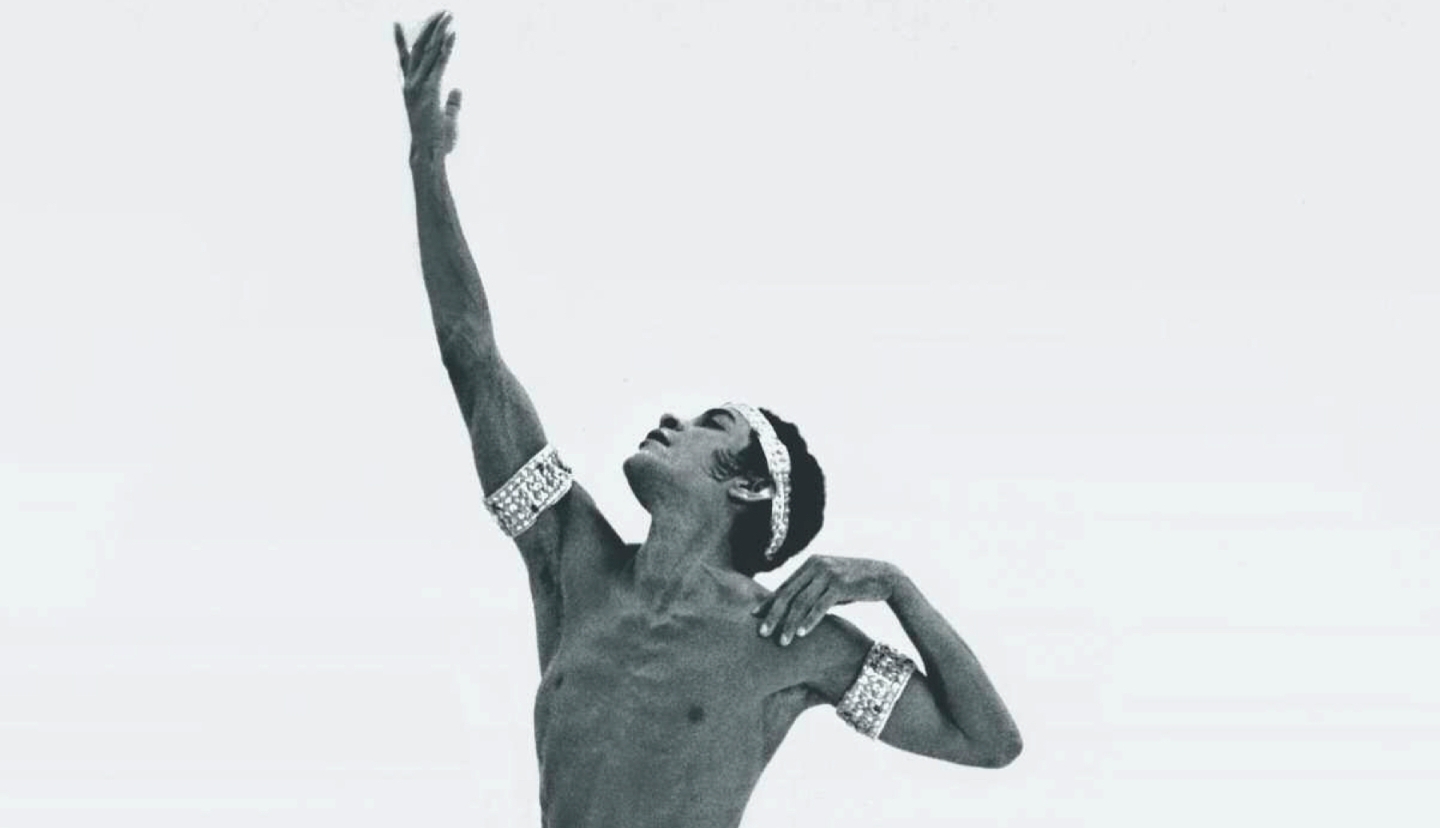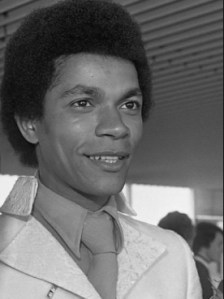
In celebration of Black History Month, we are sharing the stories of three African-American dancers who Alonzo admired as a young artist. The third and final artist in our series is Sylvester Campbell, professional dancer with the New York Negro Ballet, the Dutch National Ballet, and principal with the Royal Winnipeg Ballet.
Sylvester Campbell was born in Oklahoma City in 1938. As a boy, he wanted to be another Bill “Bojangles” Robinson. His sister taught him to tap dance and he built a theater in their backyard. At age 11, he started training in classical ballet at Jones-Haywood School of Ballet in Washington D.C. Only after he started auditioning for professional work did Campbell realize the deep discrimination in American ballet. So, with his sights set on dancing outside of the US, Campbell joined the New York Negro Ballet, an international touring company. He traveled with them to England and performed works by Louis Johnson, Ernest Parham, and Joseph Rickard.
When a London performance fell-through, Campbell decided to leave the New York Negro Ballet. He stayed in England and joined the BBC where he did weekly performances choreographed by Jack Carter. After stints dancing professionally in both Paris and Stockholm, Campbell joined the Het Netherlands Ballet (now Dutch National Ballet) in 1960 and danced La Sylphide, Les Sylphides, Swan Lake, The Sleeping Beauty, and Giselle. “That was always my dream,” Campbell expressed in an interview with Dawn Lille for the Ballet Review (2014), “to do those ballets, and I finally wasn’t dreaming anymore.” During his career with the Dutch National Ballet, people took notice.
Sometimes referred to as ‘the black Nureyev,’ [Campbell] was described by the English ballet writer Fernau Hall as possessing ‘a classical style of great purity, combined with fire, nobility and all the other classical virtues.’
— The New York Times, 1997
Arnold Spohr, artistic director of the Royal Winnipeg Ballet, noticed Campbell as well. From 1972-1975, he danced as a principal with the company and as a guest artist with Maurice Bejart. He also coached and partnered ballerinas for competitions in Moscow, Russia, and Varna, Bulgaria and received honors for his partner work.
‘I liked thrilling the audience,’ Campbell recounted to Dance Review. ‘I liked the tricks that excited the audience. I thought about that only in the beginning when I was young. Later on I began to get deep and to want to get the meaning out of things and to want to act.‘
Missing his home, Campbell returned to the United States in 1975 and worked with the Capitol Ballet as associate director, ballet master, dancer, and choreographer. Kathleen Crofton, his former teacher in England, then invited him to the Maryland Ballet. He danced with the company until it folded and became the Baltimore Ballet, where he served as director of the Baltimore School for the Arts’ dance department for 15 years.

Campbell (Photo: Peter Garrick, Royal Winnipeg Ballet. All RWB photos courtesy of Ted Patterson) from Dance Review 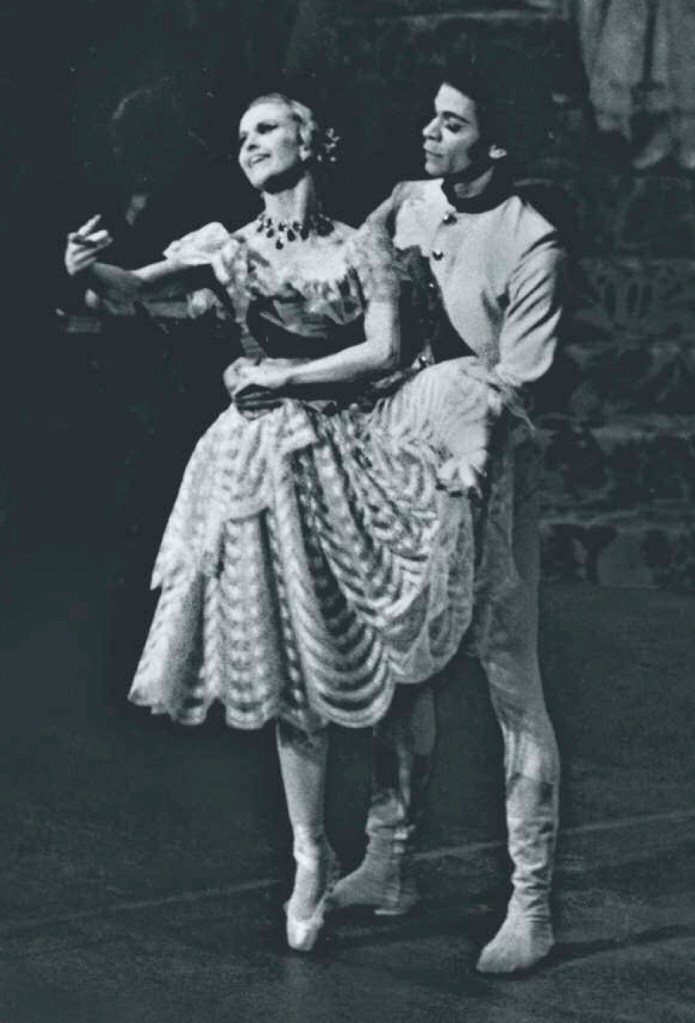
Neumeier’s Nutcracker with Violette Verdy at Royal Winnipeg Ballet (Photo: Norma McLain Stoop, RWB), courtesy of Dance Review 
Jack Carter’s Pas de Deux Romantique with Marina Eglevsky (Photo: RWB), courtesy of Dance Review 
Baltimore School for the Arts: Kimberly Dillard, SC, Megan Monroe, and corps (Photo: BSA), courtesy of Dance Review 
Giselle with Calliope Venieris at Dutch National Ballet (Photo: Hans van den Busken, courtesy of Dawn Lille) from Dance Review 
Baltimore School for the Arts: Dorris Jones and Claire Haywood’s Rhapsody in Blue (Photo: BSA), courtesy of Dance Review 
Baltimore School for the Arts: Askia Swift, SC, Roger Cunningham, Jason Reynolds. (Photo: BSA), courtesy of Dance Review 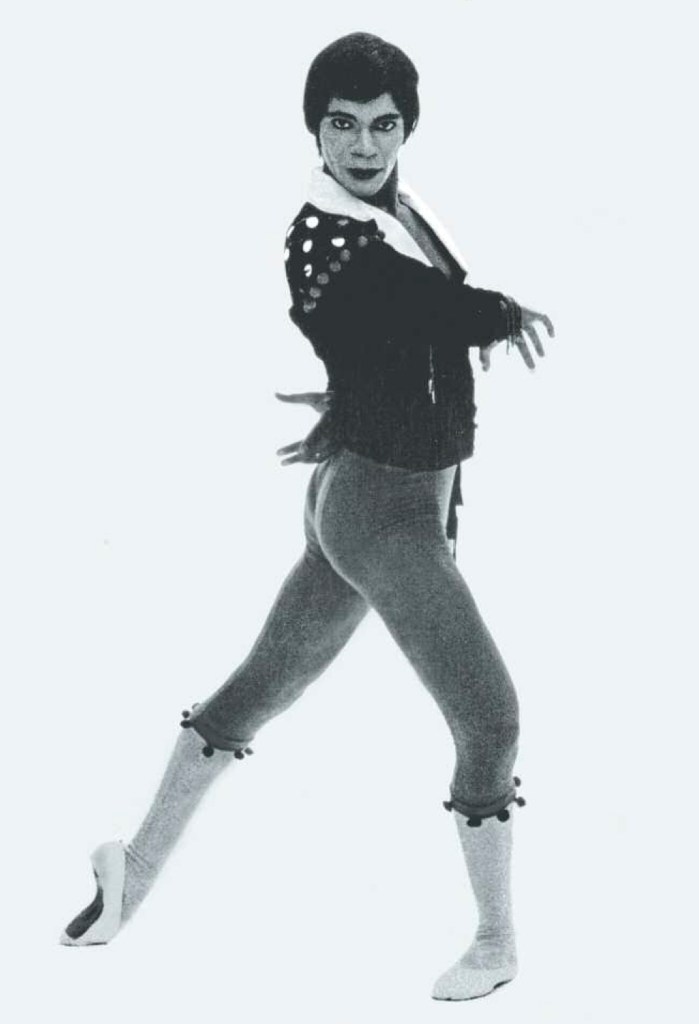
Don Quixote Pas de Deux (Photo: RWB), courtesy of Dance Review 
Campbell, courtesy of MoBBallet 
Dutch National Ballet, courtesy of MoBBallet 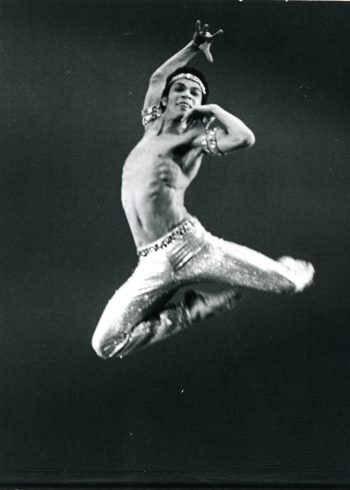
Le Corsaire, courtesy of MoBBallet 
Campbell, from Pinterest
Campbell danced for a lifetime, closing the curtain with a final performance in 1992. He passed away on March 9, 1997 in Baltimore from respiratory failure.
Fellow Dutch National Ballet artist Raven Wilkinson, said of Campbell, ‘I regret that he was not seen in the United States as a dancer because there was living proof of a danseur noble no matter what color, and he was amazing.’
— Sourced from MoBBallet
Campbell persisted through continual discrimination, jealous retaliation, and rejection to achieve his dream of dancing classical ballet. He refused to abandon his love or settle for less than the roles he thought he deserved. We are deeply grateful to Sylvester Campbell for his resilience, his excellence, and his lasting legacy; he “was a pioneer among black classical dancers.” — The New York Times.
For further reading on Sylvester Campbell, visit our sources:
A Conversation with Sylvester Campbell, Ballet Review Fall 2014
Sylvester Campbell, MoBBallet.org
Sylvester Campbell, 59, a Pioneer Among Black Classical Dancers, The New York Times
1961, MoBBallet.org
Featured photographs courtesy of:
A Conversation with Sylvester Campbell, Ballet Review Fall 2014
Pinterest, Donna Anderson Parker’s memorable photos
Sylvester Campbell, MoBBallet.org
1961, MoBBallet.org
1970, MoBBallet.org
1972, MoBBallet.org
Written by Erin McKay

